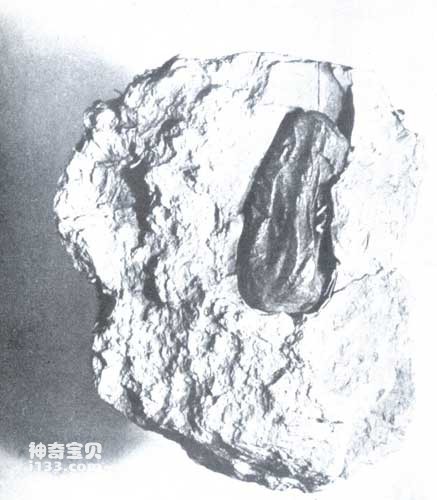Dormancy refers to an organism in a relatively static state, accompanied by a significant reduction in metabolic activity. Dormancy is divided into two types, namely hibernation and aestivation, but does not include the physiological sleep of the animal's daily cycle. Hibernation is seasonal in most cases. Many animals hibernate over winter to avoid severe cold. In arid areas of low latitudes, animals use aestivation to survive the intense heat. Seasonal climate changes not only affect the physiological activities of organisms, but also affect the food sources of organisms. Therefore, during the long-term evolution process, organisms have developed different adaptation methods and used dormancy to resist adverse conditions. Seasonal dormancy is often controlled by the body's internal rhythm, and changes in external conditions only trigger it. In order to increase the energy reserves in the body, fish, like other higher organisms, often require a long preparation period before falling asleep.
1. Dormancy of fish - aestivation
Since the conditions in the waters are relatively stable, most fish lack a typical dormant state. However, swamps in the equatorial region often dry out for weeks or months, thus prompting the fish living here to enter aestivation. Many mythical fishes, such as climbing perch, silk-footed fish, snakehead and other fish with accessory respiratory organs, spend the summer buried in the mud in a torpor state. After rainfall, when the ponds and rivers are filled with water, they come back to life again. To return to normal life, lungfish have more complicated aestivation methods in order to avoid death during the dry season. The African lungfish, known as mud fish, lives in a river that dries up for a long time every year, with no water at all. The tropical sun is very strong and the heat bakes the mud at the bottom of the river very hard.

Before the dry season approaches, each fish will burrow into the mud, secrete a large amount of mucus from its skin, and mix it with the mud to form a hard mud shell. The fish will sleep in the mud shell until the next rain. recovery. There is a small path inside the mud shell that communicates with the outside world. The lungfish relies on this path to breathe air when it is dormant in the shell. The lungfish is in the mud shell. Even if it is dug out by someone, as long as the mud shell is not peeled off and left for half a year, the lungfish will still be safe and sound. If the mud shell is thrown into lukewarm water, the fish will wake up and swim actively within a few minutes after the mud dissolves. During aestivation, the South American lungfish also creates caves in the mud similar to those of the African lungfish. The difference is that the South American lungfish relies on a porous mud cover to seal it from the outside world. The loach that lives in the waters along the Danube River, when the river dries up in summer, it digs into the mud without eating or drinking, entering a state of aestivation, relying only on its special intestines to breathe air and maintain life. There is a peculiar tree fish in South Africa. In summer, it climbs to the shade of a tree and sleeps for more than two months to survive the scorching heat.
2. The dormancy of fish - hibernation
Hibernation refers to the overwintering dormancy of animals, which is an active process. Although the animal's body temperature is similar to the ambient temperature during hibernation, especially ectothermic animals, when it encounters suitable stimulation or reaches the awakening period according to its own rhythm, its body temperature can rise in a short period of time and return to normal body temperature. During the hibernation period, animals' breathing times, heartbeat frequency, and respiratory oxygen consumption are greatly reduced. Changes in the physiological functions of dormant animals are mainly controlled by the nerve center. During the dormant period, all endocrine glands cease activity and various metabolic levels generally decrease. But when you wake up, the physiological activities of each organ quickly return to normal in a certain order. This process consumes a lot of energy. After the entire hibernation period, the weight of hibernating animals will be significantly reduced.
The vast majority of fish do not have a hibernation period. In order to solve the difficulties of severe cold, a few fish begin to hibernate when the temperature drops near winter until the water temperature rises again in the following spring. They are not completely unconscious like amphibians, reptiles and mammals, but simply stop feeding, hide among algae and rocks, or burrow into the mud bottom or caves, more or less entering a state of paralysis. For example, carp often overwinter in groups deep in the water. Dozens to hundreds of them form a puddle on the bottom of the water, form a circle, and lean their heads against each other until they disperse in the following spring. When dormant, their breathing is very slow, and their gill covers The movement seems to be very difficult.
Tench spend the winter buried in river mud. Even if they are lifted out of the mud and placed on the shore, it will not be seen that they are alive without being beaten with a stick. In winter, snakeheads move to deep water, bury their bodies in the mud to survive the winter, stop eating, and live in hibernation. Eels have a dormant state similar to that of snakeheads in winter. They usually find deep water and then bury themselves in the mud, becoming paralyzed. The phenomenon of hibernation in marine fish is very rare. It is known that the larvae of plaice live in shallow seas and are buried in the sand in a resting state in winter.
animal tags:
We created this article in conjunction with AI technology, then made sure it was fact-checked and edited by a Animals Top editor.